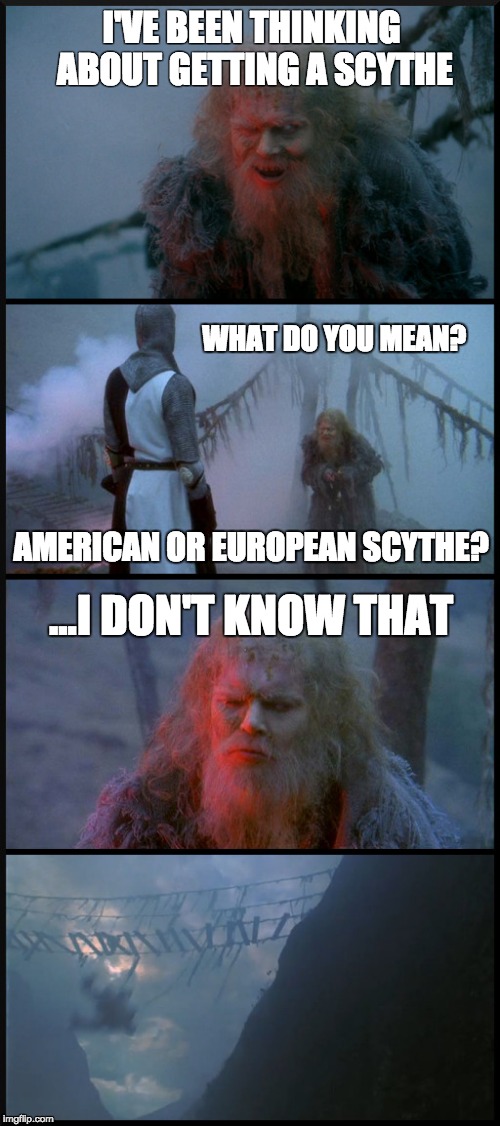Looks like a clone of the North Wayne Tool Co.'s "scythook"

However, it's a tang-and-ferrule construction rather than the two-piece shell socket that NWT Co. used. My guess is maybe someone like True Temper made it, or maybe Village Blacksmith, but I've not seen that particular model before.
Thanks! I'll be trying to get the blade off and remove the rust so that I can get it in shape for the poison ivy harvest.





